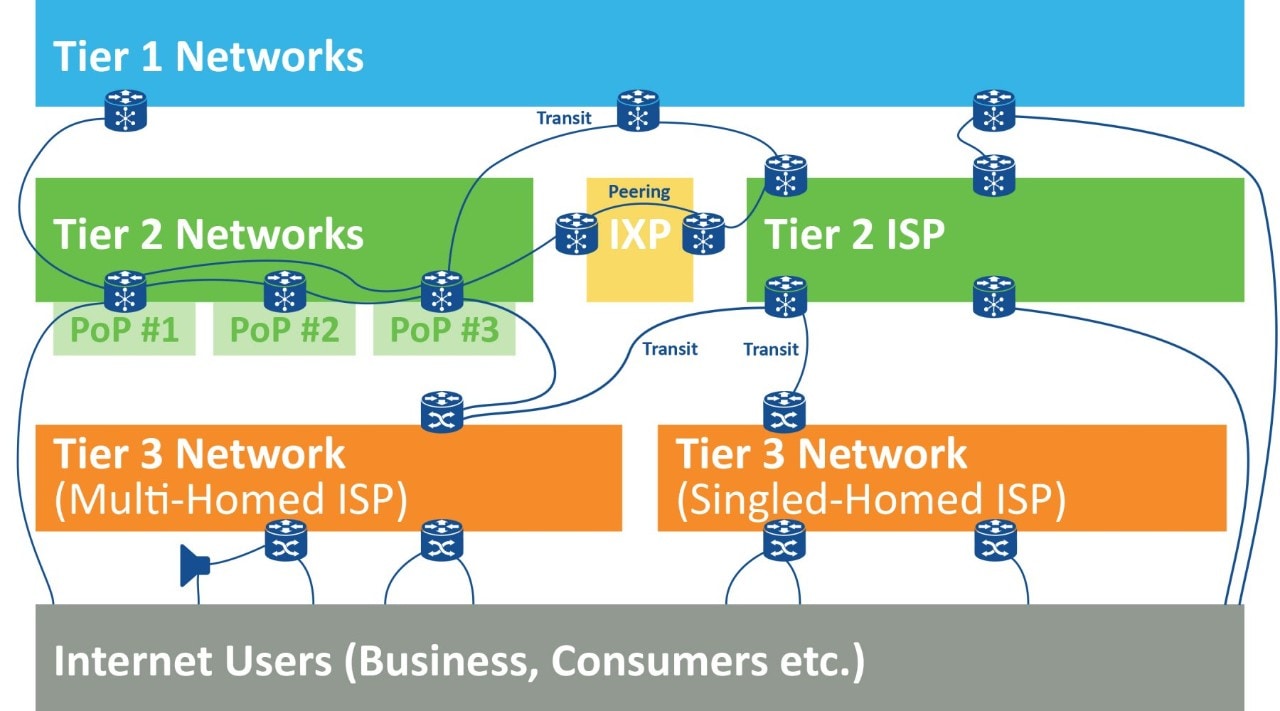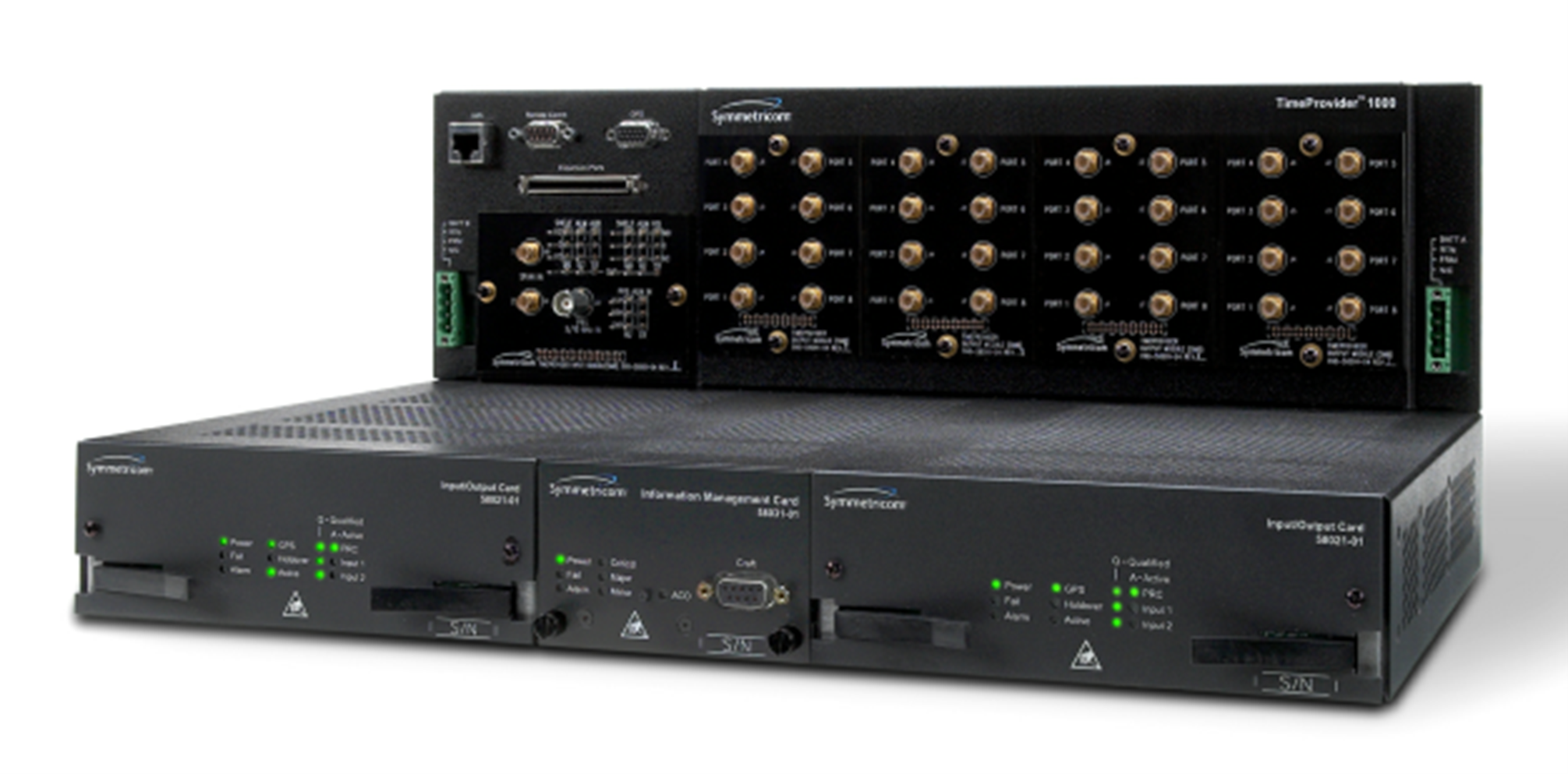Use TimeProvider® XT Extension Shelf for Point of Presence (PoP) Applications
Communications network operators need physical PoPs to facilitate interconnection between different carriers and service providers. These PoP need redundant synchronization with a small footprint, and for many years TimeProvider® 1000/1100 Access Node Clock was widely used for this application. Customers can now migrate to a new solution for PoP synchronization: TimeProvider XT extension system, with redundant TimeProvider 4100 gateway clocks that support E1/T1/CC critical timing services while having a small footprint, making it fit for PoPs.

The Importance of Point of Presence (PoP) Timing Connections in Networks
Recently, Telstra International, the global arm of the Australian telecommunications carrier, announced that it was extending its network capabilities into Latin America by establishing a new dedicated PoP in Dallas, Texas, and collaborating with leading Mexican telecommunications providers Axtel and Vivaro.1 And Telecom Italia Sparkle signed an agreement with Algérie Télécom to establish a new PoP that will significantly improve Algeria’s international connectivity and strengthen its position as a regional hub.2
Figure 1 Global Communications Networks
 |
Why are carriers and service providers investing in and extending their PoPs worldwide? What are the PoPs unique synchronization needs? A PoP is a critical component in the architecture of telecommunications networks. It serves as an access point or physical location where two or more networks or communication devices build a connection from one place to other communications networks or to each other. Here’s a detailed look at what a PoP is and its significance:
Definition of PoP
A Point of Presence (PoP) is a physical site or location that houses networking equipment, servers, routers, switches and other hardware necessary for connecting to the internet or a larger network. It acts as a gateway for network traffic, enabling users to access online resources, communicate with remote offices and utilize cloud services. In some regions it is referred to as metropolitan PoP.
Types of PoPs
- Internet PoP: These PoPs provide access to the internet and are typically operated by ISPs. They connect end-users to the global internet infrastructure.
- Enterprise PoP: These are used by businesses to connect their offices, data centers and remote locations. They often include private network connections and security measures.
- Carrier PoP: Operated by telecommunications companies, these PoPs facilitate interconnection between different carriers and service providers.
Figure 2 Diagram of Networks with PoP nodes

Importance of PoPs
- Connectivity: PoPs are essential for providing reliable and high-speed internet connectivity to users and businesses.
- Scalability: By strategically placing PoPs, network operators can scale their services to meet growing demand and expand their coverage area.
- Redundancy and Reliability: Multiple PoPs in different locations provide redundancy, enabling the network to remainoperational even if one PoP experiences issues.
- Performance Optimization: PoPs help optimize network performance by reducing latency and improving data transfer speeds through efficient routing and traffic management.
Importance of Synchronization in Small Office PoPs
Small office PoPs are essential for extending network services to remote or smaller locations. They act as local hubs that connect to larger networks, allowing data to be transmitted efficiently and accurately. Synchronization in these PoPs is vital for several reasons:
- Accurate Data Transmission: Synchronization enables data packets to be transmitted and received at the correct times, reducing the likelihood of data loss or corruption.
- Network Stability: Proper synchronization helps maintain network stability, preventing issues such as jitter and latency that can degrade the quality of service.
- Compliance with Standards: Many communication protocols and standards require precise timing to function correctly. Synchronization facilitates compliance with these standards, facilitating interoperability between different network components.
Best Practices for Synchronization in Small Office PoPs
A PoP typically resides in a space rented from a telecommunications carrier and the PoP synchronization device is often enclosed by a cage. The carrier hosting the small office often will not allow any roof access for GNSS antennas for synchronization. In this case it is best for the PoP node to take a T1/E1 signal from the hosting carrier, or to take a reference from a SONET/SDH feed coming from one of the facilities owned by the PoP, to enable synchronization. They need to be ultra-reliable synchronization clocks because often PoPs cannot easily be serviced by their owners.
To provide effective synchronization in small office PoPs, consider the following best practices:
- Redundancy: Implement redundant clocks with holdover to deliver continuous operation even if one source fails.
- Environmental Control: Maintain a stable thermal environment for oscillators to minimize the impact of temperature variations on timing accuracy.
- Regular Calibration: Periodically calibrate and test synchronization equipment to confirm it meets the required accuracy standards.
Equipment for Small Office PoP Synchronization
The TimeProvider 1000/1100 was introduced in 2003 for network access and small office PoP synchronization. Its small footprint and 32 outputs of E1, 2.048MHz, T1, 1.544MHz and CC made it suitable for small offices. It offered a fully redundant synchronization solution available with quartz and rubidium holdover clock cards. Utilized all over the world, it is being discontinued in 2026.
Figure 3 TimeProvider 1000 (front access shelf) and TimeProvider 1100 (rear access shelf)
 |
 |
In its place we recommend the TimeProvider XT extension system, a fan-out for redundant TimeProvider 4100 gateway clocks. The TP XT is scalable and flexible and offers 40 redundant outputs of E1, 2.048MHz, T1, 1.544MHz and CC. Redundant TP4100 grandmaster clocks feed the TimeProvider XT to provide continuous operation even if one source fails. Like the TP1x00, the TP4100 can filter wander and jitter on a legacy input signal such as E1 or T1.
Figure 4 Redundant TimeProvider 4100 grandmasters with TimeProvider XT system

Conclusion
In summary, a PoP is a vital component of network infrastructure, providing connectivity, data transmission and network stability. It supports various network configurations and management functions to provide efficient and reliable network operations. Synchronization is a critical aspect of maintaining reliable and efficient communication networks, especially for small office PoPs. By adhering to best practices, network administrators can be confident that their PoPs remain synchronized and provide high-quality service. As network demands continue to grow, the importance of robust synchronization solutions will only increase, making it essential for small office PoPs to stay ahead of the curve.
Migrate your small office PoP synchronization to the TimeProvider XT Extension System with Redundant TimeProvider 4100 Gateway Clocks, a new modern platform with a small footprint and ultra-reliability—very suitable for PoP situations. To find out more about the TimeProvider 4x00 grandmaster and XT Extension System, please visit our web page.